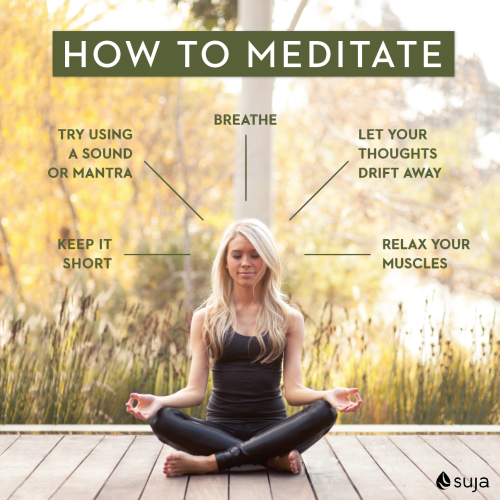How to Meditate? Vital Tips for Busy People
Exactly How to Meditate: A Detailed Strategy to Getting Mindfulness and Calmness
Reflection works as a powerful tool for achieving mindfulness and emotional calm in a hectic world. By comprehending the basic concepts and methods associated with meditation, individuals can grow a method that boosts their general health. This conversation will detail important actions, from creating a favorable setting to integrating meditation into daily regimens. As we discover these components, it comes to be clear that the journey to mindfulness is not just concerning the act of being in silence, however instead about promoting a much deeper connection with oneself and the world around us. What might this improvement require?
Understanding Meditation
Recognizing meditation includes comprehending its essential concepts and strategies, which work as the foundation for the practice. At its core, meditation is a psychological workout focused on promoting relaxation, developing internal power, and creating empathy and insight. The practice urges people to concentrate their attention, often via strategies such as deep breathing, visualization, or mantra repeating.
Meditation can be categorized right into numerous styles, consisting of mindfulness, transcendental, and loving-kindness reflection, each with unique objectives and techniques. Mindfulness meditation emphasizes present-moment understanding and non-judgmental observation of ideas and sensations, while transcendental reflection includes the use of particular concepts to transcend ordinary mind. Loving-kindness reflection focuses on developing an attitude of love and empathy in the direction of oneself and others.
Despite the strategy used, the main objective remains regular: to cultivate a much deeper understanding of the mind and its patterns. This self-awareness cultivates psychological resilience, quality of thought, and a profound sense of tranquility (How to meditate?). By comprehending these techniques and concepts, people prepared for a successful meditation practice that can substantially enhance their general health
Getting Ready For Your Practice
Prior to beginning your reflection technique, it is vital to produce a setting favorable to concentrate and relaxation. Ensure that the location is complimentary and clean of mess, as a clean atmosphere can aid get rid of the mind.
Consider the illumination, as all-natural light can enhance your state of mind and energy. Soft, warm lighting is frequently much more soothing than severe fluorescent lights. In addition, choose a comfy temperature level, making certain that you are neither as well hot neither as well chilly.
Integrating elements that advertise serenity can better enhance your experience. This could consist of soft cushions or coverings for comfort, along with calming aromas from necessary oils or scent. It can additionally be beneficial to have actually a timer set for your reflection session to prevent diversions from clock-watching.
Fundamental Meditation Techniques

One more reliable technique is body check reflection. This involves emotionally scanning your body from head to toe, noticing any areas of stress or pain and consciously kicking back those muscles. This practice promotes a deeper link in between your body and mind.

Last but not least, loving-kindness meditation concentrates on cultivating compassion towards yourself and others. Quietly repeat phrases of a good reputation, improving psychological well-being and interconnectedness. Each of these techniques functions as a structure for your meditation journey, enabling you to locate the method that reverberates ideal with your individual technique.
Maintaining Focus and Mindfulness

Developing a specialized reflection space can improve the capacity to preserve mindfulness. A peaceful, clean environment decreases disturbances, permitting deeper immersion in the technique. Additionally, establishing a time restriction can help handle expectations; beginning with much shorter sessions may alleviate the change right into longer methods.
Utilizing techniques such as body scanning or observing feelings can likewise bolster mindfulness. These techniques urge practitioners to stay existing and involved with their physicality, securing their interest in the minute. Normal method is important; the mind builds strength with time, developing a more powerful capability for emphasis.
Incorporating Meditation Into Life
Integrating meditation right into day-to-day live can change routine activities into opportunities for mindfulness and self-reflection. By incorporating mindfulness techniques right into typical jobs, people can cultivate a greater sense of visibility and serenity among the numerous hours of day-to-day life.
Begin by identifying moments throughout your day where you can practice and pause mindfulness. Even mundane tasks like walking or cleaning dishes browse around this site can end up being opportunities for reflection by guiding your attention to the experiences of motion and the noises bordering you.
In addition, reserving committed times for meditation can strengthen its practice. Beginning with short sessions, slowly enhancing period as you come to be extra comfortable. Use suggestions or hints-- like a particular time of day or a calming noise-- to establish uniformity.
Inevitably, the objective is to weave mindfulness into the material of day-to-day live, allowing you to come close to each moment with purpose, consequently boosting your general feeling of health and clearness.
Final Thought
In conclusion, effective reflection needs a silent setting, a comfy setting, and a focus on the breath. Routine meditation, also in short sessions, promotes a much deeper connection to the present minute, ultimately leading to higher calmness and mental quality in daily life.
Reflection can be categorized into various styles, consisting of mindfulness, transcendental, and loving-kindness reflection, each with unique purposes and methods. Mindfulness meditation stresses present-moment understanding and non-judgmental monitoring of feelings and ideas, while transcendental reflection includes the use of particular rules to transcend ordinary thought procedures.With your meditation room prepared, it's time to discover various basic reflection techniques that can help cultivate mindfulness and internal peace.Consistently maintaining focus and mindfulness throughout reflection can be difficult, especially for those new to the practice.Developing a dedicated reflection room can improve the capability to maintain mindfulness.